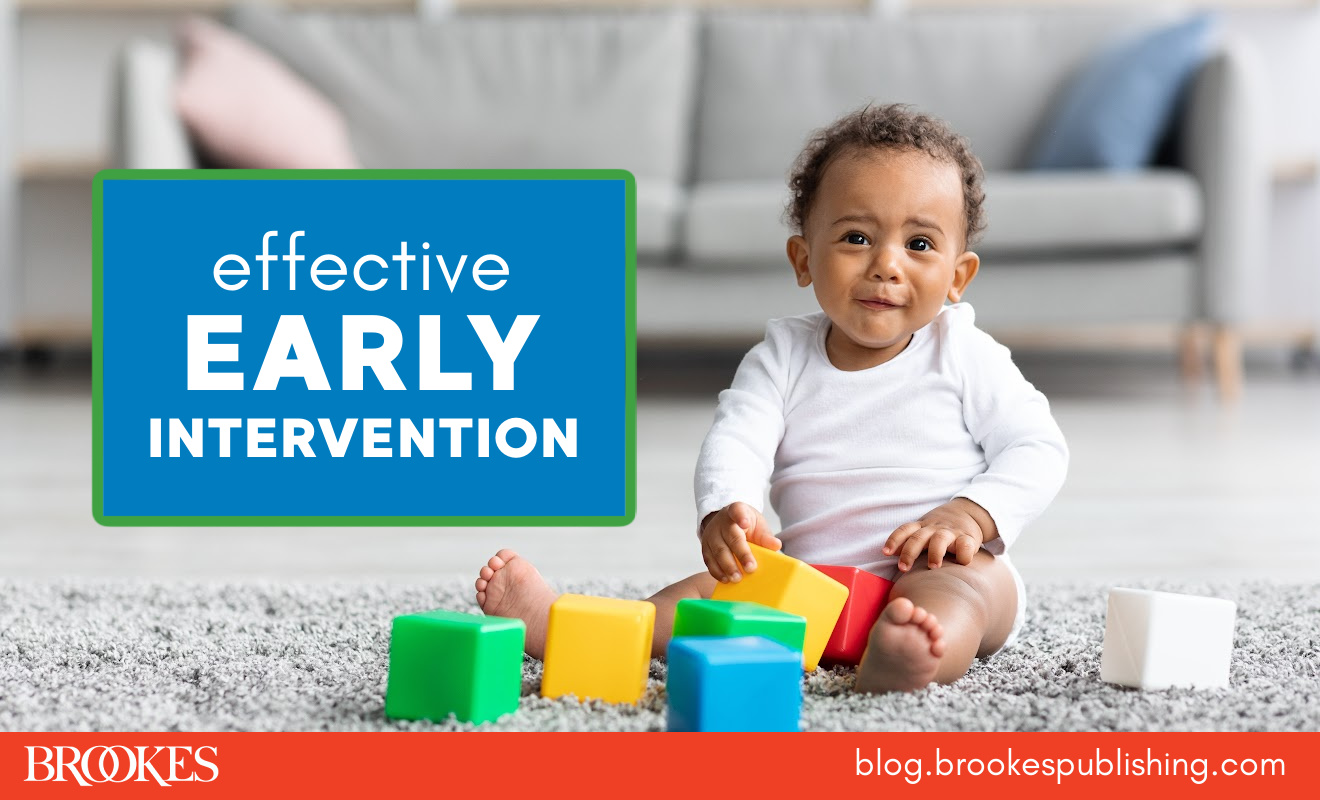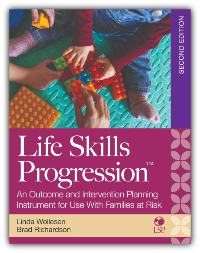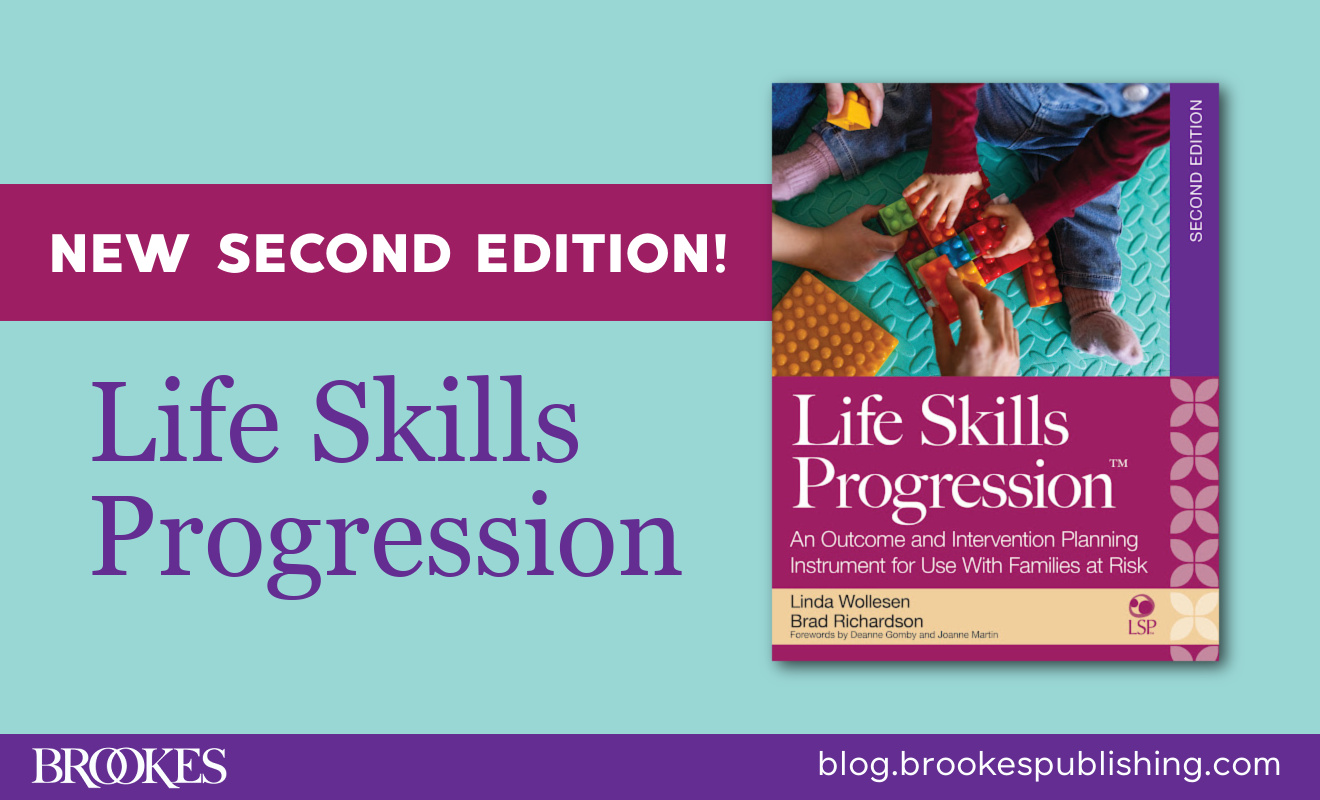10 Early Intervention Elements that Influence Positive Outcomes
September 19, 2024
 How can home visiting programs demonstrate improved outcomes for parents and children—and secure the funding they need to help more families? Collecting data and monitoring outcomes with a reliable tool like Life Skills Progression™ (LSP), Second Edition, is essential. Just as important: laying the groundwork by focusing on the specific intervention elements that can influence positive outcomes.
How can home visiting programs demonstrate improved outcomes for parents and children—and secure the funding they need to help more families? Collecting data and monitoring outcomes with a reliable tool like Life Skills Progression™ (LSP), Second Edition, is essential. Just as important: laying the groundwork by focusing on the specific intervention elements that can influence positive outcomes.
Today’s post walks you through 10 critical elements of effective early intervention programs, adapted from the new edition of the LSP.
Services start early in pregnancy.
The two best windows of opportunity for offering pivotal information and support to young parents come early in pregnancy and the first days after delivery. During these times, parents are more vulnerable, have a greater need for support, and are the most interested in learning how to safeguard the pregnancy and care for the infant. Because these are times when parents are often open to utilizing resources outside the family, programs that provide services only after delivery miss a major opportunity for prevention. Programs that begin services after the first 2 years of life miss an opportunity to influence bonding and attachment in relationships and the massive surge of environmentally influenced synapse growth in the infant brain.
Visits are frequent and continue for several years.
Best practice programs use a range in frequency of visits from weekly to twice per month, with a length of service from prenatal to 3 years or 5 years. Some schedule visits weekly and add center-based socialization opportunities to lessen parental isolation, provide experience with social play, and increase the opportunity to observe good parenting from staff and other parents. Other programs schedule visits twice per month, but visits occur weekly for 6 weeks at the start of service in early pregnancy and again after the birth of the first child. Some models have a flexible curriculum divided into weekly, twice monthly, or monthly lessons, allowing visitors to match family availability and preferences.
Staffing is stable.
Lack of retention of skilled staff affects the visitor–family trust relationship and parental outcomes. Whenever a change in staffing occurs, there is a risk that a parent will think they won’t have the same closeness with the new visitor, and therefore services will not be as good. This perception has the potential to slow progress, and in some cases it may result in the parent dropping out of the program. The higher the family’s risk factors, the more likely it is that the disruption of the parent–visitor relationship will cause their exit from service.
Services are relationship and strengths based.
Most home visitation models have incorporated the empowering concepts of strengths-based and solution-focused relationships. Strengths concepts are based on the belief that people grow or heal faster as they become aware of and use their strengths. Home visitors are taught to see parents as the experts on their lives and their child; to notice what is right, not what is wrong; to point out strengths and successes; and to support parents in “learning to do” rather than doing something for them.
Staff receive high-quality training.
Staff training varies greatly between models. Most national visitation systems have strong standards that include required training, certification, site and fidelity reviews, and/or recertification. Training is often linked to parent education, interventions, or child development curriculum, but visitation theory and skills extend well beyond parent education and child development. Much-needed training areas include strengths-based concepts and techniques; cultural competence; communication and listening skills; and management of high-risk or violent situations, mental illness, and drug use.
Visitor caseloads are small.
The size of home visitation caseloads varies greatly. Caseload ratios inflated by fiscal expediency or unrealistic expectations can result in poorer outcomes, and these programs may not find measuring outcomes possible or practical. Many program staff struggle with overwhelming paperwork and requirements for meetings. These stressors lead to staff burnout, family attrition, and poor outcomes. A well-organized curriculum and streamlined data and paperwork requirements will go a long way to support staff who support families.
Evidence-based and literacy-appropriate curriculum is used.
To achieve positive parent and child outcomes, regular use of an evidence-based pregnancy and parenting curriculum is key. Unfortunately, not all programs have been able to incorporate well-researched, comprehensive, culturally appropriate educational materials that are designed to match the stages and issues encountered during pregnancy and early parenting. Outcomes will improve measurably when program funding allows for materials beyond dated photocopies and culturally inappropriate material.
Reflective functioning is supported.
Reflective functioning is the capacity to think about and see the links between events and a person’s behavior, feelings, and knowledge and to respond appropriately (Parlakian, 2001a). Combined with supportive visitor relationships and curriculum, reflective skills may be the magic ingredient for creating significant change. Ideally, four parallel reflective processes should be set up:
- The parent uses the home visitor to think out loud and collaboratively.
- The visitor uses the supervisor to think collaboratively about each family.
- The parent teaches the toddler to think about limits and consequences as motor and language skills develop.
- Within the agency, leadership is reflective and the organizational structure is collaborative within the organization and within the community.
Services are culturally attuned to families.
Helping families heal when they have experienced discrimination and violence should be a goal of every early childhood program. Embracing cultural differences and their strengths is integral to all aspects of home visitation. Supervision must include sensitivity to culture at each interaction, including a focus on strengths of cultural practices that may differ from those more typical in the U.S. Home visitors must never assume they know an individual’s culture and beliefs. Ask questions to understand. Cultural competence is most powerful and respectful when it is individualized.
Collaborative relationships exist with community service agencies.
Extending collaboration beyond the agency management level is important. There are four types of collaborative efforts used by the home visitation model: interagency collaboration, inclusion of parents as advisors, use of cross-discipline consultants for staff, and collaboration between different home visitation programs. (See Life Skills Progression for more on each type of collaboration.)
To give vulnerable families the support they need to thrive, focus on the 10 key elements in today’s post. And be sure your program is monitoring progress with the LSP—a field-tested, validated, and reliable tool that generates a broad, accurate portrait of the life skills of parents, caregivers, and young children from birth to 5.




Write a Comment
Your email address will not be published. Required fields are marked *
Post a Comment